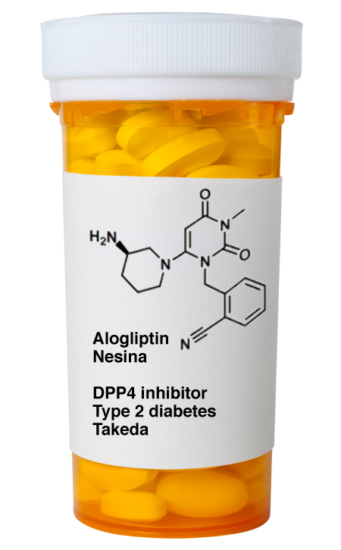 In January 2013, the U.S. Food and Drug Administration approved NESINA for the treatment of type 2 diabetes in adults as an adjunct to diet and exercise.
In January 2013, the U.S. Food and Drug Administration approved NESINA for the treatment of type 2 diabetes in adults as an adjunct to diet and exercise.
NESINA uses a novel mechanism of action to lower blood glucose levels. A dipeptidyl peptidase-4 inhibitor (DPP4i), NESINA is designed to slow the inactivation of hormones GLP-1 (glucagon-like peptide-1) and GIP (glucose-dependent insulinotropic peptide), which normally stimulate the secretion of insulin.
NESINA was invented by scientists at Takeda California, Inc. (http://www.takeda.com/), who used ALS Beamline 5.0.3 to collect x-ray diffraction data for approximately 100 co-crystal structures of various small molecule compounds bound to DPP4. Data for the initial structure solution of DPP4 was collected at ALS Beamline 5.0.2.
Takeda California has been using the ALS since 2002, and is one of the original Participating Research Team (PRT) members of the Berkeley Center for Structural Biology (BCSB). The high degree of performance and automation at Beamlines 5.0.3 and 5.0.2 have helped Takeda California scientists to successfully advance several structure-based drug discovery projects to clinical evaluation.
Read the Berkeley Lab press release for more information.